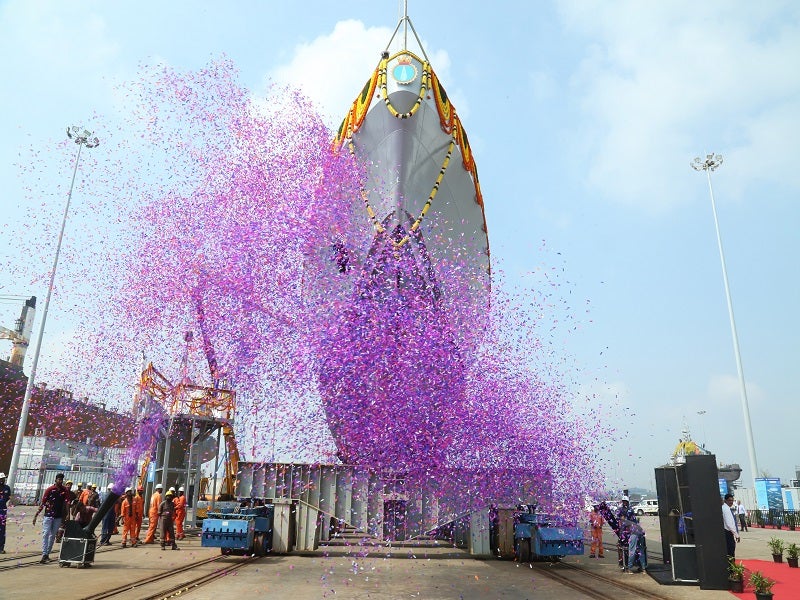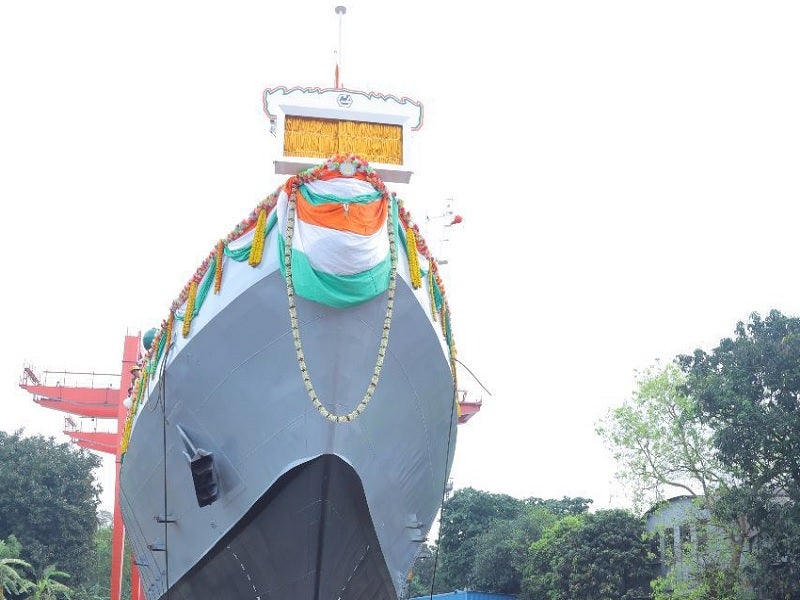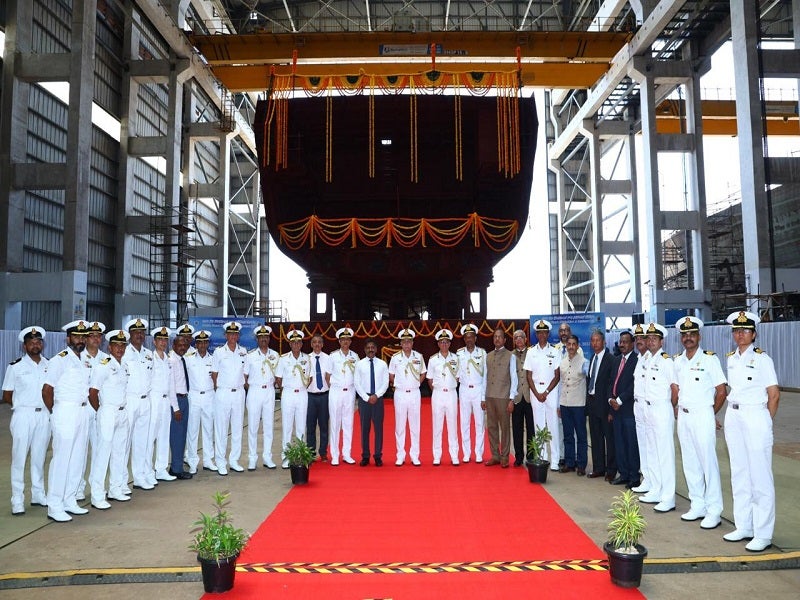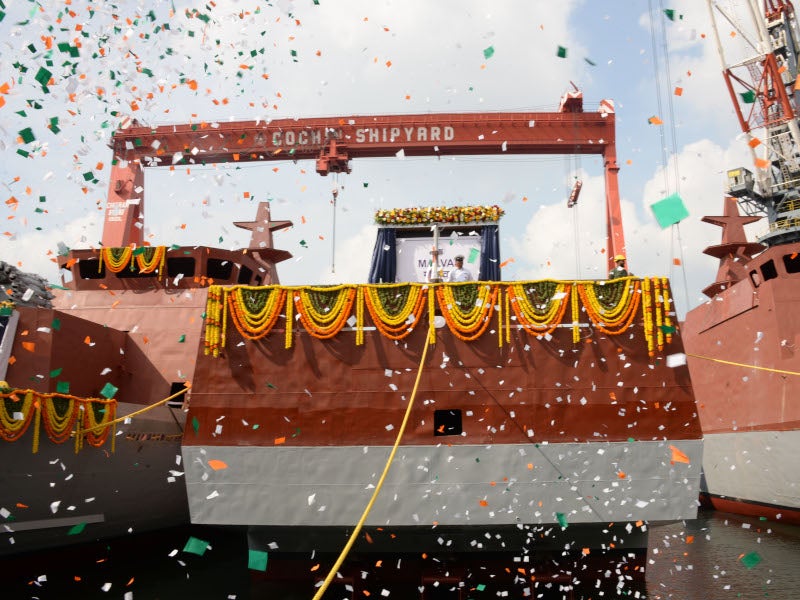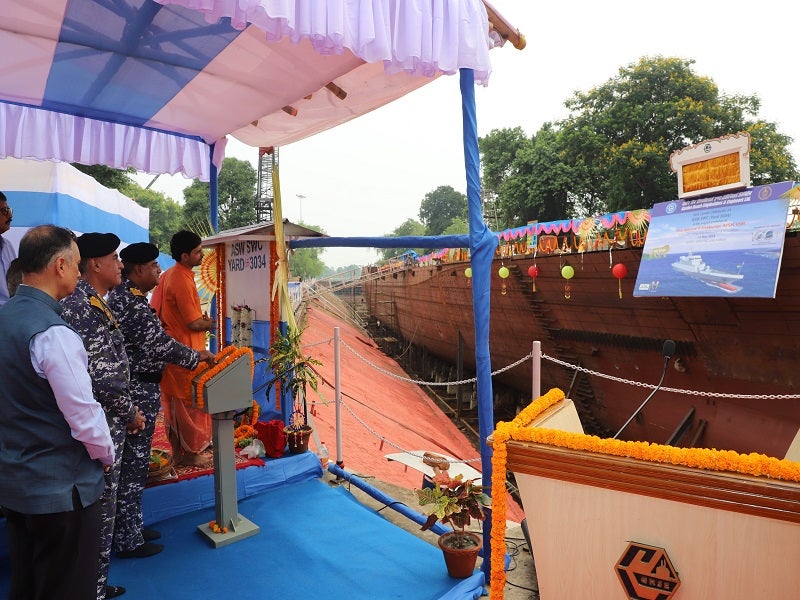Anti-Submarine Warfare Shallow Water Craft (ASW-SWC) vessels are being built by Cochin Shipyard (CSL) and Garden Reach Shipbuilders & Engineers (GRSE) for the Indian Navy.
The ASW vessels will replace the ageing Abhay-class corvettes that entered service with the Indian Navy in 1989.
The construction of these vessels is part of the Government of India’s Make In India initiative.
The ASW-SWC will perform subsurface surveillance on coastal waters, coordinate ASW operations with aircraft, and destroy subsurface targets in inland waters.
The warships can also perform search and rescue operations during both day and night, in coastal areas, defend against intruding aircraft, and lay mines on the sea bed.
The vessels being built by GRSE are designated as Arnala-class while those being built by CSL are designated as Mahe-class vessels.
The steel-cutting ceremony of the ASW-SWC vessels was held at Cochin Shipyard, Kochi, Kerala, in December 2020.
The first Arnala-class vessel is expected to be delivered in August 2024, and the remaining craft will be delivered by April 2026.
The first Mahe-class vessel is expected to be delivered by November 2024.
ASW-SWC ship development timeline
The Indian Navy issued the request for proposal for the development of ASW-SWC to the defence public sector undertaking shipyards and Indian private shipyards in April 2014.
CSL and GRSE emerged as the L1 and L2 bidders, respectively, for the construction and supply of 16 ASW-SWC vessels.
The Ministry of Defence signed two contracts worth $1.9bn with CSL and GRSE for 16 ships in April 2019. Each shipyard is responsible for building eight vessels under the contracts.
GRSE is building four ships while the remaining four ships are being subcontracted to L&T Shipbuilding, for hull construction and partial outfitting.
The warships are constructed according to the classification society rules and naval ship regulations.
They also follow the marine pollution standards of the International Maritime Organization and Safety of Life at Sea guidelines.
Arnala, the first ASW-SWC vessel being built by GRSE, was launched in December 2022, followed by the second vessel, Androth, in March 2023.
The keel for the seventh vessel was laid in June 2023 while the third vessel, named Anjadip, was launched during the same month. Amini, the fourth vessel, was launched in November 2023.
The fifth and sixth vessels, named Agray and Akshay, were launched in March 2024. The keel laying ceremony for the eighth ASW-SWC took place in May 2024.
The first three ships being built by CSL, including Mahe, Malvan, and Mangrol, were launched in November 2023, followed by the fourth and fifth ships named Malpe and Mulki in December 2023.
ASW-SWC ship design and features
The ASW-SWC vessels will have a displacement of 900 tonnes (t) and be equipped with high-performance signature and stealth technologies, making them undetected targets for enemy submarines and other surveillance systems.
The vessel’s overall length is 78m and its breadth is 11.3m. The ship has a maximum draught of 2.7m at full load.
It can operate in coastal waters within 200nm of the base port.
The vessel has a maximum speed of 25 knots and an endurance of more than 1,800nm at 14 knots. The vessel can accommodate nearly 57 personnel, including seven officers.
The ASW-SWC warship can sprint quickly for short bursts to maintain contact with a detected submarine.
It will also have the capability to share information about enemy submarines with friendly antisubmarine warships and aircraft through sophisticated data link networks.
The warships are designed to be equipped with various payloads to cater to the vessels’ functions. They can handle low-intensity maritime operations and mine-laying operations.
Weapons and equipment
The ASW vessels will be armed with lightweight torpedoes, ASW rockets and mines, 30mm naval surface gun, and two 16.7mm stabilised remote control guns with optronic control systems.
The mine-laying rails on the vessel enable it to lay mines on the sea bed.
The shallow watercraft will feature advanced integrated platform management systems, including propulsion machinery, auxiliary machinery, power generation and distribution machinery, and damage control machinery.
The vessels will be equipped with various automated systems, including integrated platform management system, automatic power management system, and battle damage control system.
ASW-SWC sensors
The anti-submarine warfare ships will feature a hull-mounted sonar, a low-frequency variable depth sonar, and fire control systems for both rocket and torpedo tube launchers.
Propulsion
The ASW vessel will be equipped with a water jet propulsion system driven by three diesel engines.
Contractors involved
CSL is collaborating with Smart Engineering & Design Solutions (SEDS) and Surma for the development of the eight ASW-SWC warships.
SEDS is providing complete design solutions for the vessel while Surma is responsible for delivering naval survivability management solutions.

